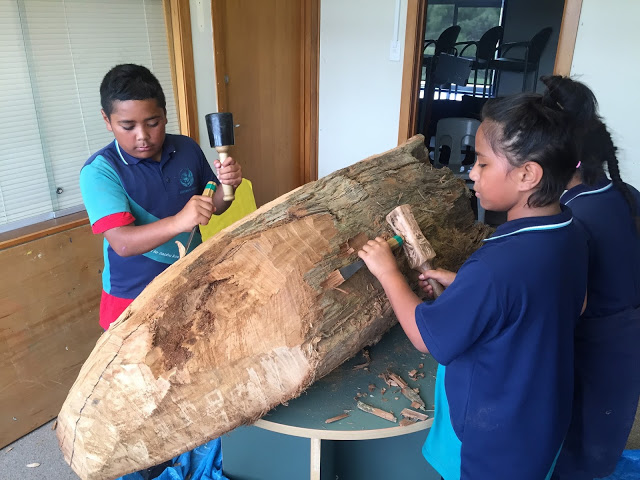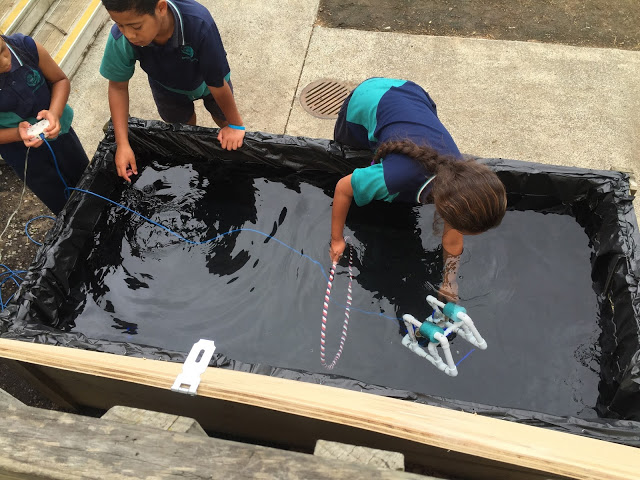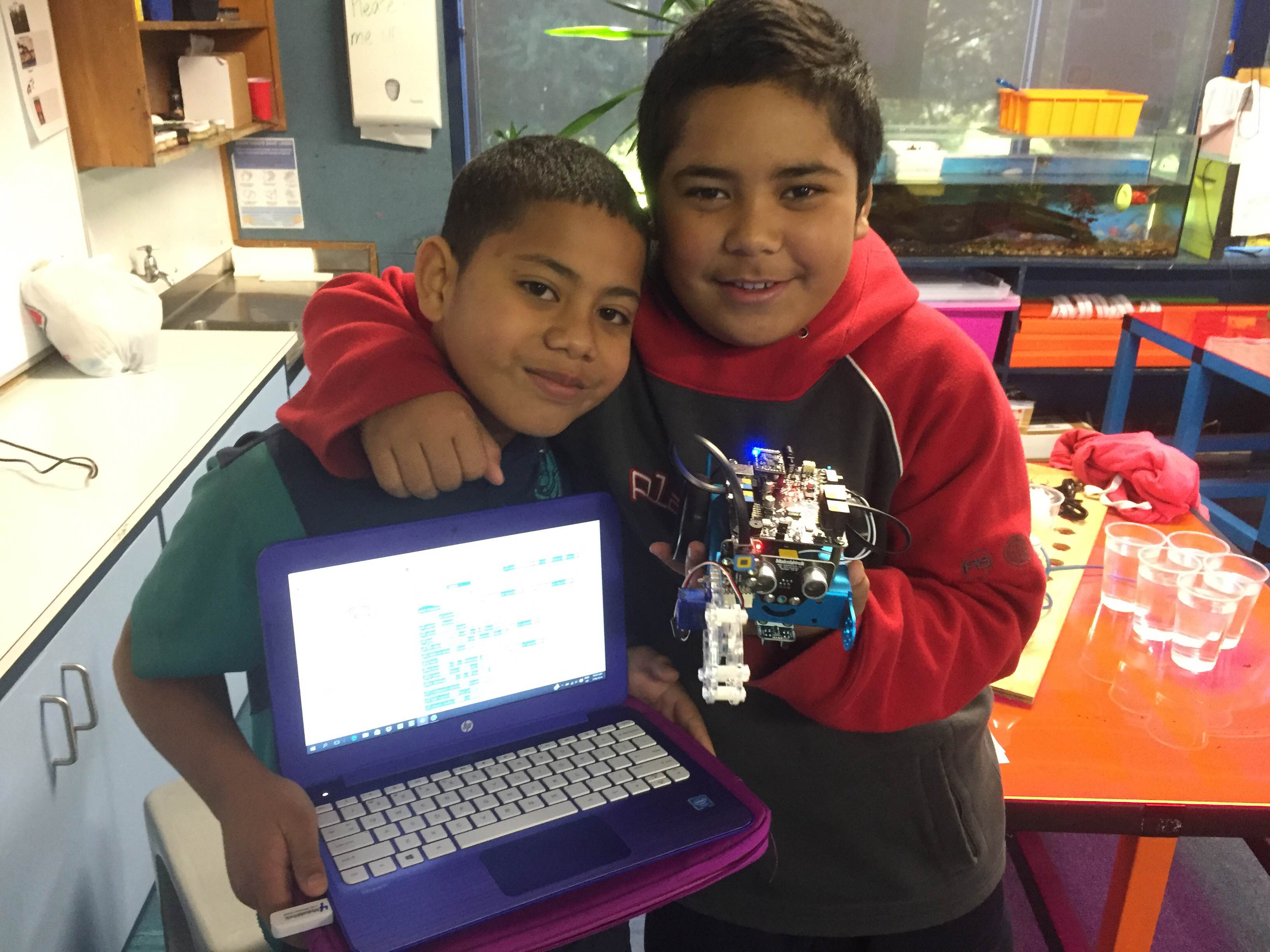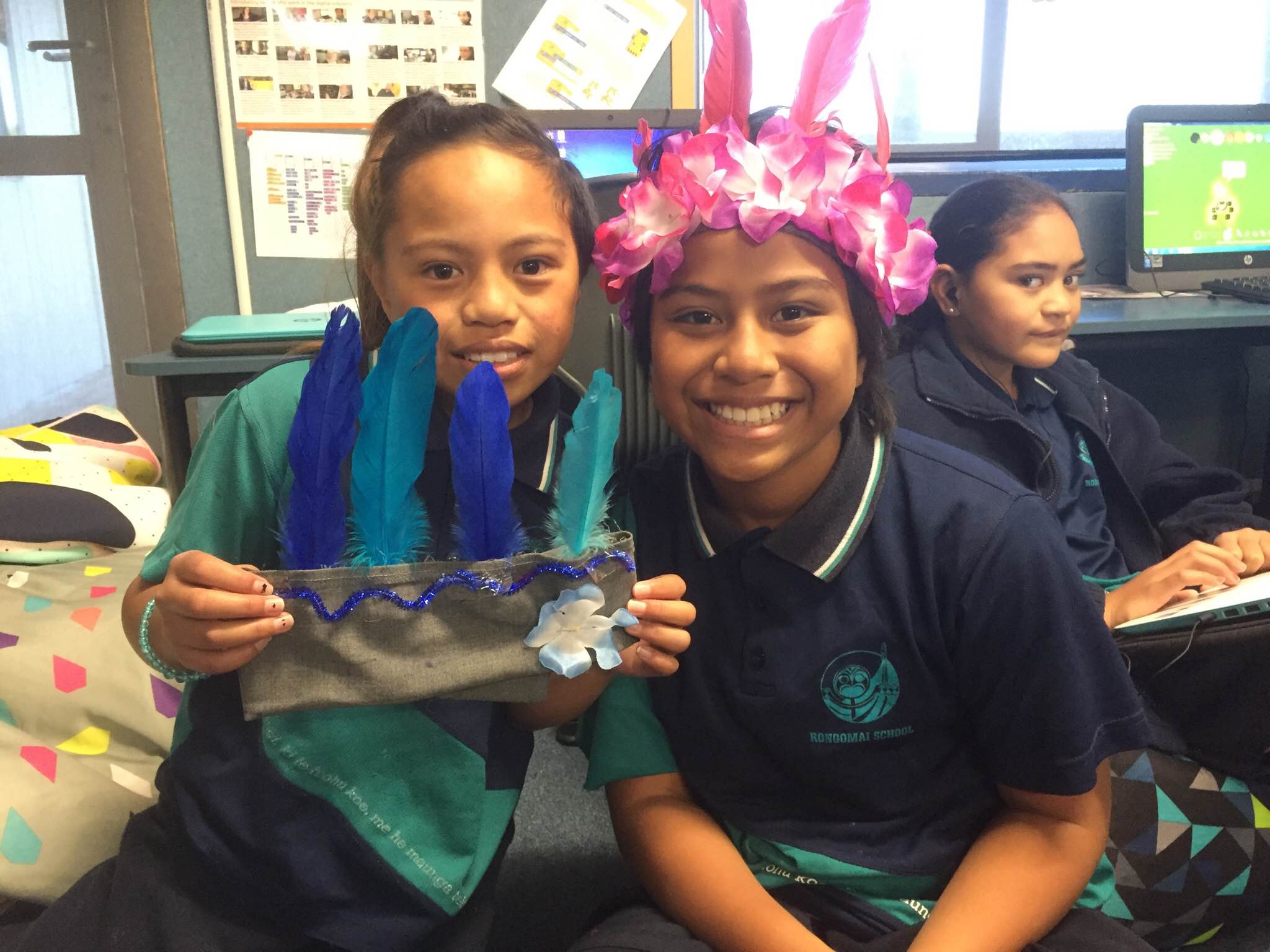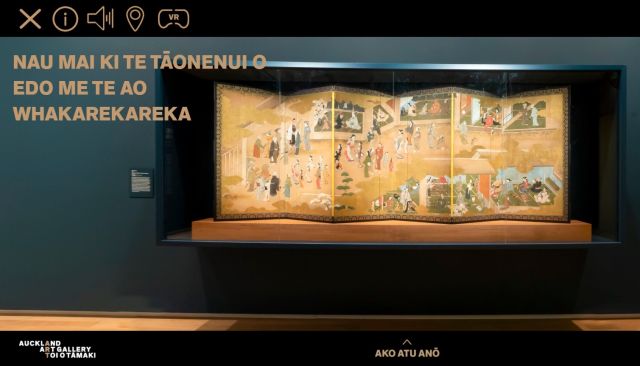Kids kauri carving links science and culture (+VIDEO)
• November 11, 2016

From left: Ula Sefo, 10; Nick Pattison, teacher; Sheribyn Tiatia, 10; and James Nansen, 10; from Rongomai School. The mural represents the school’s five different cultures; Māori, Samoan, Tongan, Niuean and Cook Island. Photo: John-Michael Swannix
Tainui master carver Chris Wade has been visiting Rongomai School in Otara for a few hours each week to teach pupils.
The kids use traditional tools, paid for by a grant from Creative New Zealand, to carve a piece of swamp kauri donated by Tainui iwi.
Teacher Nick Pattison said the project has helped the class of Polynesian pupils link back to their cultural roots.
“We’re trying to connect what goes on in [the classroom] with their ancestors.
“That’s a hard thing to do as a tech class so it’s the perfect tool to see how knowledge was passed on traditionally,” said Mr Pattison.
“We do the oral culture a lot but it’s good for them to see that in an authentic form and get the opportunity to actually carve [kauri wood in line with tikanga principles]."
Rongomai Primary School student James Nansen, 10, (left) with two classmates carving the kauri pou. Photo: Supplied by Nick Pattison
Mr Wade said it was personally important for him to come into the school and pass on his knowledge.
“Doing the work at Rongomai is part of giving back to the community and doing a good thing. My parents and uncles and aunties have done a lot of work in the community and it’s just following on from them.”
Mr Wade added the students who are naturally artistic pick up carving the quickest and that the work takes a great deal of persistence and attention to detail.
“There’s a certain mauri, or life-force, that goes into [carving] and you either have that passion and energy or not,” Mr Pattison explained.
James Nansen, 10, is one of those who developed a connection to carving. He told Te Waha Nui it makes him feel relaxed.
“James is, I think, the student that exhibits this the most and he obviously enjoys the carving but I think he’s connected with it at a spiritual level,” said Mr Pattison.
Mr Pattison added that even the kids who haven’t naturally taken to carving still understand the cultural importance of it.
The carving project began last year after Rongomai pupils developed a 3D tech device to test whether stream water could be contributing to the spread of kauri dieback disease.
Rongomai School students test the Aquabots they designed to test for kauri dieback in stream-water. Photo: Supplied by Nick Pattison
The device was printed by Auckland University of Technology and is being used by plant pathologists in New Zealand.
“The pou [carving] is just one part of their learning journey,” said Mr Pattison.
This is the first year of a new way of teaching being trialled by Mr Pattison. It has a focus on improving the self-confidence of students by using art, science, technology and the kids' cultural heritage as educational tools.
A survey of Rongomai School pupils last year found 80 per cent thought being a scientist would be a good career. However, only 40 per cent believed they could ever be a scientist.
“Society’s expectations are completely against these kids,” said Mr Pattison.
“I want to show them that their ancestors were scientists and they can be too.”
Rongomai Primary students Fotu Holikimafua, 10, and James Nansen, 10 with a robot they are learning to code.
Mr Pattison said the new Science, Technology, Engineering, Maths (STEM) education model is already working.
“Compared to their peers these kids are so far ahead, perhaps not at a national level but I can show you how their test results are improving, you can see how clearly they communicate.”
When visited by Te Waha Nui the students each introduced themselves confidently and showed what projects they were working on.
Rongomai Primary students Fotu Holikimafua, 10, and James Nansen, 10, demonstrate how to use computer coding to control a robot. Video: John-Michael
The students split into small groups to each work on different technological, scientific or artistic projects.
Rongomai Primary students Daize Puaham, 10, & Sherbyn Tiatia, 10, display headdresses they are making.
To find out more about the STEM class program at Rongomai Primary and to follow the students' progress visit the class's blog.

Whakatairanga ka tika, whakamaua ngaa mita
AISHA CAMPBELL (NGĀTI RUANUI, NGĀ RAURU, NGĀ RUAHINE, TE ATIAWA, TARANAKI) • October 28, 2025

Supporters hope new council will save Western Springs Speedway
Savannah Lendich Jonkers • October 8, 2025


Whakatairanga ka tika, whakamaua ngaa mita
AISHA CAMPBELL (NGĀTI RUANUI, NGĀ RAURU, NGĀ RUAHINE, TE ATIAWA, TARANAKI) • October 28, 2025

Supporters hope new council will save Western Springs Speedway
Savannah Lendich Jonkers • October 8, 2025

